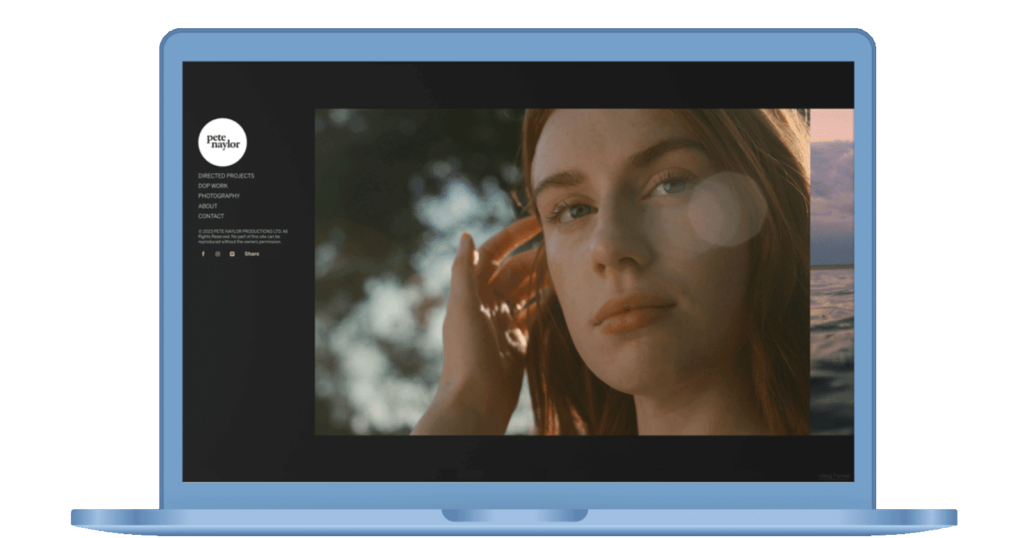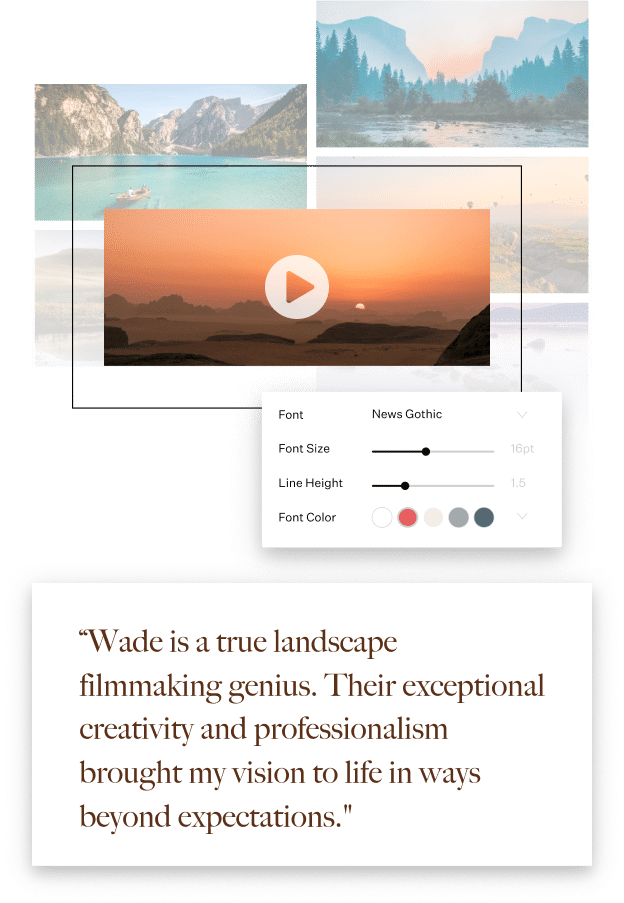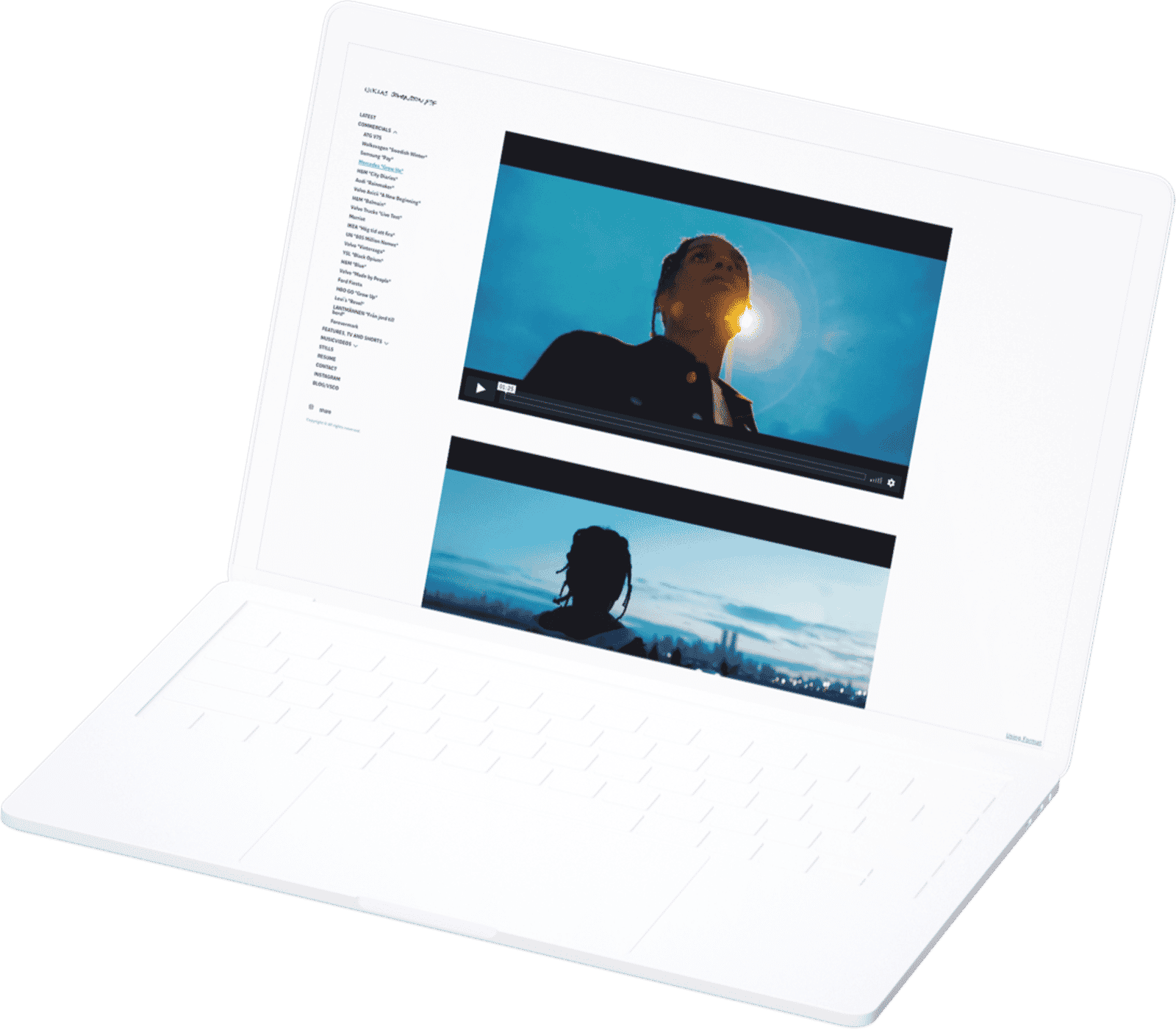To make your online filmmaker portfolio stand out and leave a lasting impression on visitors, you need to showcase your unique style, creativity, and expertise. Here are some tips to help you stand out from the crowd:
Unique Look and Feel, and Branding: Create a visually distinct and memorable design for your portfolio that reflects your filmmaking style and personal brand. Avoid generic templates and opt for a custom look that sets you apart. Consider creative presentations such as incorporating interactive elements and dynamic layouts into your portfolio. For example, use parallax scrolling, animated transitions or interactive galleries to engage visitors. Just be sure it complements and doesn’t take away from your original content.
Highlight Achievements, Provide Testimonials and Reviews: If you’ve won awards, received recognition, or collaborated with notable clients, showcase these accomplishments in your portfolio. If available, include positive feedback from clients or industry professionals to add credibility to your work. This can paint a better picture of your abilities and helps build trust.
Minimize. Only Showcase Your Best Work: Feature only your most impressive and relevant work on your portfolio homepage. Grab the viewer’s attention with a strong reel that highlights your skills and accomplishments, and avoid cluttering the homepage with unnecessary elements. Use white space strategically to create a clean and elegant presentation.
Clips, Samples and Specializations: Include individual clips or excerpts from your films to give visitors a better understanding of your style and technical skills. Consider narrowing your content focus to a specific genre, style, or niche within filmmaking if you have a specialty, or separate these into portfolios by genre. Specializing or organizing by genre can help you develop a recognizable style and attract a targeted audience.
SEO Optimization: Implement search engine optimization (SEO) techniques to improve the visibility and discoverability of your portfolio in search engine results. Use relevant keywords and meta tags to increase the chances of being found by potential clients or employers through powerful search engines like Google.
Keep Users Engaged with Blogging/Newsworthy Content: Consider including a blog or news section where you can share your thoughts, experiences, and updates on your latest projects. This demonstrates your engagement in the industry and can help build community. Provide behind-the-scenes content that offers a glimpse into your filmmaking process. This can include making-of videos, production photos, or director’s commentary on your projects. Just be sure you have usage and permissions covered before you share.
Engage With Your Audience and Seek Feedback: Encourage feedback and interaction. Include a comments section or social media integration to enable visitors to share their thoughts or questions. Ask for feedback from peers, mentors, or industry professionals. Constructive criticism can help you refine and improve your portfolio.
Be sure to build in regular promotion of your site. Share your portfolio link on social media, with industry peers, and within relevant filmmaking communities to increase visibility.
Remember that making your filmmaker portfolio stand out involves creativity, innovation, and a genuine interest in expressing your passion for filmmaking. Tailor your portfolio to reflect your unique voice and style, and don’t be afraid to take risks and experiment with new ideas. A standout, unique portfolio can open doors and lead to exciting opportunities in the filmmaking industry.





